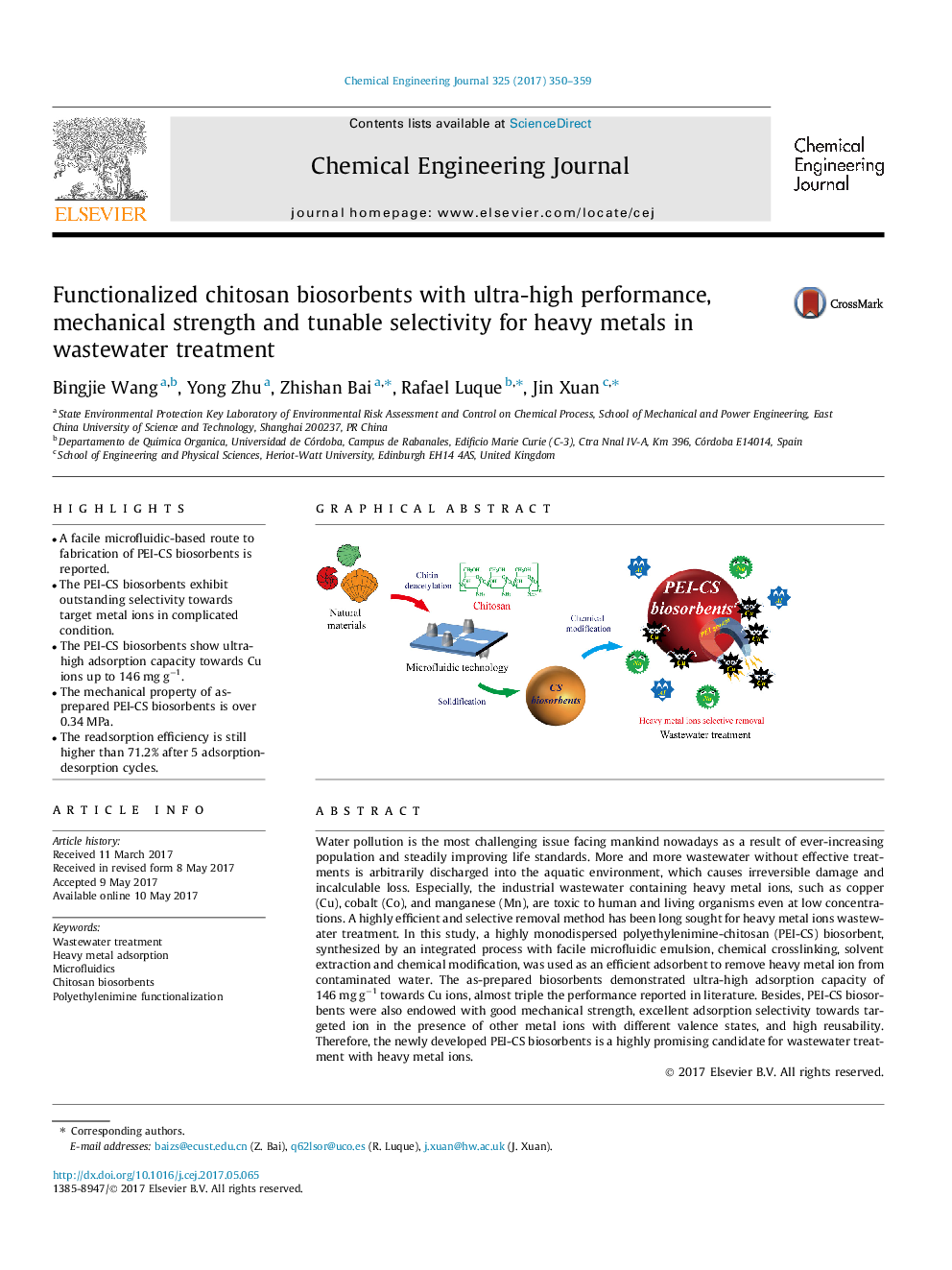| کد مقاله | کد نشریه | سال انتشار | مقاله انگلیسی | نسخه تمام متن |
|---|---|---|---|---|
| 6466113 | 1422953 | 2017 | 10 صفحه PDF | دانلود رایگان |
- A facile microfluidic-based route to fabrication of PEI-CS biosorbents is reported.
- The PEI-CS biosorbents exhibit outstanding selectivity towards target metal ions in complicated condition.
- The PEI-CS biosorbents show ultra-high adsorption capacity towards Cu ions up to 146 mg gâ1.
- The mechanical property of as-prepared PEI-CS biosorbents is over 0.34Â MPa.
- The readsorption efficiency is still higher than 71.2% after 5 adsorption-desorption cycles.
Water pollution is the most challenging issue facing mankind nowadays as a result of ever-increasing population and steadily improving life standards. More and more wastewater without effective treatments is arbitrarily discharged into the aquatic environment, which causes irreversible damage and incalculable loss. Especially, the industrial wastewater containing heavy metal ions, such as copper (Cu), cobalt (Co), and manganese (Mn), are toxic to human and living organisms even at low concentrations. A highly efficient and selective removal method has been long sought for heavy metal ions wastewater treatment. In this study, a highly monodispersed polyethylenimine-chitosan (PEI-CS) biosorbent, synthesized by an integrated process with facile microfluidic emulsion, chemical crosslinking, solvent extraction and chemical modification, was used as an efficient adsorbent to remove heavy metal ion from contaminated water. The as-prepared biosorbents demonstrated ultra-high adsorption capacity of 146 mg gâ1 towards Cu ions, almost triple the performance reported in literature. Besides, PEI-CS biosorbents were also endowed with good mechanical strength, excellent adsorption selectivity towards targeted ion in the presence of other metal ions with different valence states, and high reusability. Therefore, the newly developed PEI-CS biosorbents is a highly promising candidate for wastewater treatment with heavy metal ions.
232
Journal: Chemical Engineering Journal - Volume 325, 1 October 2017, Pages 350-359
